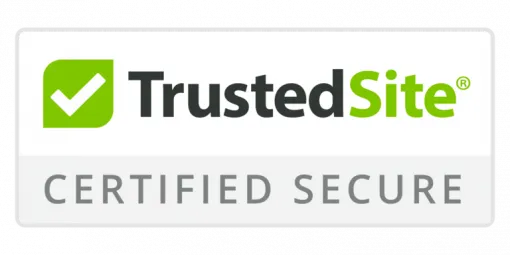Offering TOEFL Preparation Courses
If you're considering offering TOEFL preparation courses as a side hustle, you're on the right track. This endeavor allows you to leverage your English teaching skills while reaching a broad audience of international students and professionals eager to improve their language proficiency. Here's a detailed guide on how to implement this side hustle successfully.
Understanding the TOEFL Market
The Test of English as a Foreign Language (TOEFL) is a standardized test used to measure the English language ability of non-native speakers. It is widely accepted by universities, employers, and immigration departments. This creates a steady demand for TOEFL preparation courses, making it a lucrative side hustle for English instructors.
Steps to Establish a Successful TOEFL Prep Course
1. Research and Plan
- Understand the TOEFL Test Structure: Familiarize yourself with the types of questions and sections in the TOEFL test (Reading, Listening, Speaking, and Writing).
2. Develop Customized Course Content
- Curriculum Design: Create a comprehensive curriculum that covers all sections of the TOEFL test. Include practice tests, tips, and strategies for each section.
3. Set Up Your Teaching Platform
- Online vs. In-Person: Decide whether you'll offer courses online, in-person, or both. Online courses provide flexibility, while in-person classes can offer a more personalized experience.
4. Flexible Pricing Plans
- Competitive Pricing: Research market rates for TOEFL prep courses and set competitive prices. Offer different packages based on the number of sessions, group vs. individual classes, and additional resources.
5. Marketing and Promotion
- Create a Website: A professional website showcasing your services, testimonials, and success stories can build credibility.
- Social Media and Online Advertising: Utilize social media platforms and online advertising to reach a broader audience. Join forums and groups where potential clients are active.
6. Continuous Improvement
- Feedback and Assessment: Regularly seek feedback from your students to understand their needs better and improve your courses.
By following these steps, you'll not only meet your students' unique needs but also build a strong reputation in the market. Starting a TOEFL preparation course as a side hustle can be both rewarding and profitable, provided you approach it with careful planning and dedication.
Benefits of Offering TOEFL Prep
By offering TOEFL preparation courses as a side hustle, you can leverage your teaching expertise to meet the growing demand for English language instruction and generate a supplemental income stream.
As you design your course, consider the factors that drive student motivation. Many students are motivated by the prospect of studying or working abroad, so be sure to highlight how your course can help them achieve their goals.
To attract students and create a profitable side hustle, you'll need to develop effective pricing strategies. Research your competition to determine the going rate for TOEFL prep courses in your area.
Consider offering discounts for package deals, referrals, or early registration to incentivize students to enroll. You may also want to offer different tiers of service, such as one-on-one coaching or group classes, to cater to students with varying budgets and needs.
Understanding the TOEFL Exam Format
To effectively prepare clients for the TOEFL exam as a side hustle, you'll need to understand the exam's structure and scoring system.
Familiarize yourself with the four sections of the exam: Reading, Listening, Speaking, and Writing, as well as the assessment criteria used to evaluate performance.
TOEFL Exam Structure Overview
The TOEFL exam's structure is comprised of four sections: Reading, Listening, Speaking, and Writing, each designed to assess different aspects of your English language proficiency. As you prepare your students for the exam, you'll want to become familiar with the format to better inform your test-taking strategies. This knowledge can also be leveraged as an effective side hustle, offering specialized tutoring sessions for TOEFL preparation.
In the Reading section, students encounter a variety of passages aimed at evaluating their ability to read and understand written text. For Listening, audio materials across lectures, conversations, and classroom settings help gauge listening levels in the English language, reflecting different real-life situations. Capitalizing on this, you can create tailored lesson plans and audio exercises as part of your tutoring services to help students excel.
Creating quality TOEFL lessons around Speaking requires consideration of multiple skills, including oral storytelling and discussing current events and personal experiences. As a side hustle, you can offer one-on-one speaking practice sessions that focus on these areas, using effective resource recommendations relevant to the tested sections. This approach not only enhances student performance but also adds value to your tutoring service.
Developing student writing skills is equally crucial. Consider utilizing your prior classroom experience and student assessments to design comprehensive writing exercises. By offering targeted writing workshops, you can help students improve their essay structure, coherence, and argumentation. This specialized guidance can be a lucrative component of your side hustle, attracting students who need focused support.
Scoring and Assessment Criteria
Understanding how the TOEFL exam is scored and what assessment criteria are used can significantly enhance your side hustle as a TOEFL tutor. Familiarizing yourself with the scoring rubric and assessment methods allows you to offer more tailored and effective tutoring services, helping your students excel.
Focus on the four sections of the TOEFL exam: Reading, Listening, Speaking, and Writing. Each section has its own specific assessment criteria, which you should master to provide high-quality tutoring. Here's a breakdown:
| Section | Assessment Criteria |
|---|---|
| Reading | Accuracy, vocabulary, and comprehension of academic texts |
| Listening | Ability to understand conversations, lectures, and discussions |
| Speaking | Clarity, coherence, and fluency in spoken English |
| Writing | Writing quality, coherence, and grammar in written English |
Identifying Your Target Market
Identifying Your Target Market
When planning a TOEFL preparation course as a side hustle, pinpointing your target market is crucial. You need to identify specific demographics such as international students, working professionals, or individuals seeking visa certifications who'll benefit most from your services.
Conducting a demographic analysis will help you understand the characteristics, needs, and goals of your potential clients, allowing you to create targeted marketing strategies and tailor your course content to their specific needs.
To effectively segment your target market, consider the following factors:
- Age and occupation: Are you targeting young adults, working professionals, or retirees?
- English proficiency level: Are your clients beginners, intermediate, or advanced learners?
- Test-taking goals: Are they aiming to improve their TOEFL scores for academic, professional, or visa purposes?
Setting Up Your Course Structure
Setting Up Your TOEFL Preparation Side Hustle
As you set up your TOEFL preparation side hustle, you'll need to focus on creating thorough course content that addresses the specific needs of your target market.
Develop a clear syllabus that outlines the course objectives, topics, and timeline, ensuring your students stay on track. This will enable you to plan engaging lessons that incorporate effective strategies for teaching reading, writing, speaking, and listening skills, ultimately helping your students achieve their desired TOEFL scores.
Course Content Creation
To create a thorough TOEFL preparation side hustle, you'll need to develop a logical structure that effectively organizes your content and guides students through the learning process.
To achieve this, focus on curriculum integration, mapping out how each lesson and activity aligns with the TOEFL exam format and learning objectives.
When creating your side hustle content, leverage multimedia resources to cater to different learning styles and keep your students engaged. This may include video lessons, audio lectures, infographics, and interactive quizzes.
Here are three essential steps to create all-encompassing side hustle content:
- Conduct a needs analysis: Identify your students' strengths, weaknesses, and learning goals to inform your content development.
- Design engaging lessons: Break down complex topics into manageable chunks, and use real-life examples to illustrate key concepts.
- Review and update content: Regularly review your side hustle content to guarantee it remains relevant, effective, and aligned with the TOEFL exam format.
Syllabus Development Process
Developing a well-structured syllabus is crucial for launching your side hustle as a TOEFL preparation tutor, as it provides a clear roadmap for your students to follow and helps you stay organized throughout the course. To create an effective syllabus, you'll need to take into account the course's learning objectives, the students' needs, and the resources available.
Here's a breakdown of the key components to consider:
| Syllabus Component | Description | Example |
|---|---|---|
| Learning Objectives | Clearly define what students will learn and achieve | Improve reading comprehension by 20% |
| Course Outline | Outline the topics and skills to be covered | Week 1: Introduction to TOEFL format |
| Resource Selection | Choose relevant and engaging materials | TOEFL practice tests, online resources, textbooks |
When developing your syllabus, ensure alignment between the learning objectives, course outline, and resource selection. This will help you create a cohesive and effective course structure. By taking the time to carefully plan your syllabus, you'll set yourself and your students up for success. Remember to regularly review and update your syllabus to ensure it remains relevant and effective.
Taking this meticulous approach will not only enhance the learning experience for your students but also establish your credibility and reliability as a TOEFL preparation tutor, thereby boosting your side hustle's reputation and client base.
Lesson Planning Strategies
With your syllabus in place, you're ready to start building the backbone of your TOEFL preparation side hustle: the lessons themselves, which require thoughtful planning to guarantee they engage, inform, and effectively prepare your clients for the exam. As you develop your lesson plans, keep in mind the importance of active learning and technology integration to cater to diverse learning styles.
Here are three key strategies to evaluate:
- Task-based learning: Design lessons around real-life tasks that mirror the exam format, such as writing essays or participating in conversations. This approach encourages clients to apply language skills in practical contexts.
- Multimedia resources: Incorporate audio, video, and online materials to supplement traditional textbooks and add variety to your lessons. This can include TED Talks, podcasts, or online quizzes.
- Collaborative activities: Incorporate group work, discussions, and peer feedback to foster a sense of community and promote active learning. This can be achieved through online platforms, such as discussion forums or video conferencing tools.
Creating Engaging Lesson Plans
By incorporating a mix of interactive activities, visual aids, and real-world examples into your side hustle educational sessions, you can create an engaging and effective learning environment that motivates participants to achieve their goals.
Interactive activities, such as group discussions, debates, and role-playing, help individuals develop their communication and problem-solving skills while fostering critical thinking. You can also leverage multimedia resources, like videos, podcasts, and online quizzes, to add variety to your sessions and cater to different learning styles.
To create engaging lesson plans for your side hustle, consider your audience's interests, needs, and proficiency levels. Tailor your activities to address specific skills or knowledge areas relevant to your side hustle.
Use authentic materials, like industry news articles or case studies, to provide context and relevance. By doing so, you'll not only help your participants improve their skills but also equip them with essential tools for success in their side hustle endeavors.
Marketing Your TOEFL Prep Services
To effectively market your TOEFL prep side hustle, you need to craft a strategy that showcases your services as a unique solution to clients' English language proficiency needs. This involves identifying your target audience, understanding their specific challenges, and developing a compelling message. Establishing a distinctive brand identity will also help you stand out from competitors.
Here are three essential marketing tactics to get you started:
- Leverage social media strategies: Utilize platforms like Facebook, Instagram, and LinkedIn to reach a wider audience. Share engaging content, such as study tips, exam updates, and success stories, to build your credibility and attract potential clients to your side hustle.
- Attend networking opportunities: Connect with local language schools, colleges, and universities to promote your services to their students. Participate in online forums and discussion groups to establish yourself as a TOEFL expert and to increase the visibility of your side hustle.
- Offer free consultations or assessments: Provide prospective clients with a taste of your expertise by offering free consultations or assessments. This will help them understand your teaching style and approach, increasing the chances of them signing up for your side hustle services.
Building a Strong Online Presence
Building a Strong Online Presence for Your TOEFL Prep Side Hustle
Your TOEFL prep side hustle's online presence serves as a virtual storefront, making it essential to establish a solid foundation for your website and other digital platforms. This will help showcase your services and build credibility with potential clients.
Craft a clear and concise message that communicates your unique value proposition and resonates with your target audience. Develop a strong online branding strategy that consistently reflects your brand's voice, tone, and visual identity across all platforms.
To amplify your online presence, leverage social media strategies that drive engagement and foster a sense of community. Create content that's informative, relevant, and valuable to your audience, such as tips and resources for TOEFL prep, industry news, and behind-the-scenes insights into your services.
Utilize platforms like Facebook, Instagram, and LinkedIn to reach a broader audience and build relationships with potential clients. By establishing a robust online presence, you'll be well on your way to attracting and retaining clients, ultimately growing your TOEFL prep side hustle.
Managing Course Administration Tasks
As you grow your TOEFL prep side hustle, effectively managing course administration tasks becomes crucial for guaranteeing smooth operations, timely communication with clients, and maintaining a professional reputation. To achieve this, you'll need to streamline tasks such as course scheduling, student registration, and payment processing.
Here are three essential course administration tasks to focus on for your side hustle:
- Course Scheduling: Plan and schedule your TOEFL prep courses in advance, considering factors like student demand, your availability, and holiday seasons. Use online calendars and scheduling tools to stay organized and ensure smooth course delivery.
- Student Registration: Create a straightforward registration process that captures essential student information, such as contact details and course preferences. Utilize online forms and payment gateways to simplify the process and make it convenient for your clients.
- Student Feedback: Regularly collect feedback from students to improve your TOEFL prep courses and instruction. Use surveys, email, or online forums to gather feedback, and respond promptly to student concerns.
Evaluating Student Progress
Effective client progress evaluation is key to delivering targeted services and improving overall performance in your side hustle. By implementing a systematic approach, you'll be able to identify areas where clients need extra support.
As you design your evaluation framework, progress tracking will become an essential component. You'll want to establish clear metrics to measure client progress, including project milestones, session attendance, and task completion. This data will help you pinpoint clients who are struggling and require additional guidance.
In addition to progress tracking, you'll also need to implement feedback mechanisms to guarantee clients receive constructive criticism on their performance. Regular feedback sessions, either one-on-one or in small groups, will allow you to discuss client progress, address questions or concerns, and set achievable goals.
Conclusion
As you conclude your TOEFL prep side hustle journey, you'll feel a deep sense of accomplishment, knowing you've equipped students with the tools they need to excel in the exam and pursue their dreams.
By providing top-notch instruction and genuine support, you've not only earned extra income but also made a significant impact on their lives.
Your dedication has created a ripple effect of confidence, influencing families, communities, and futures.
Give yourself a well-deserved pat on the back – your passion for teaching has truly made a lasting difference.
















































0
View comments